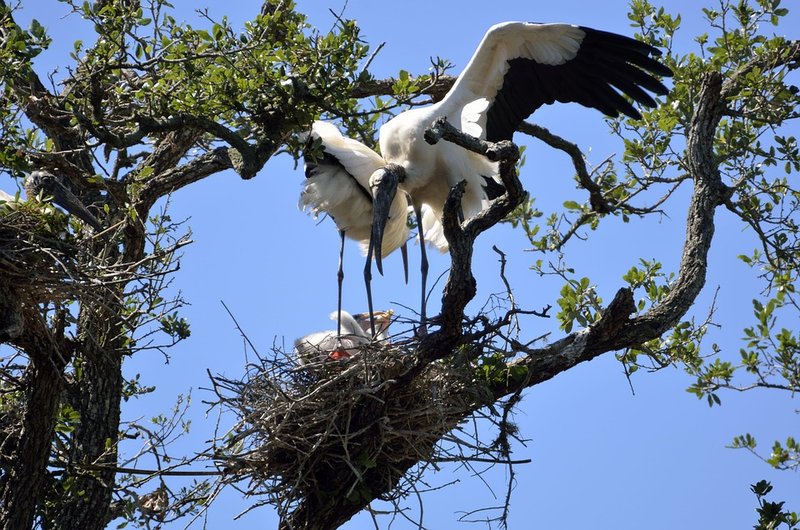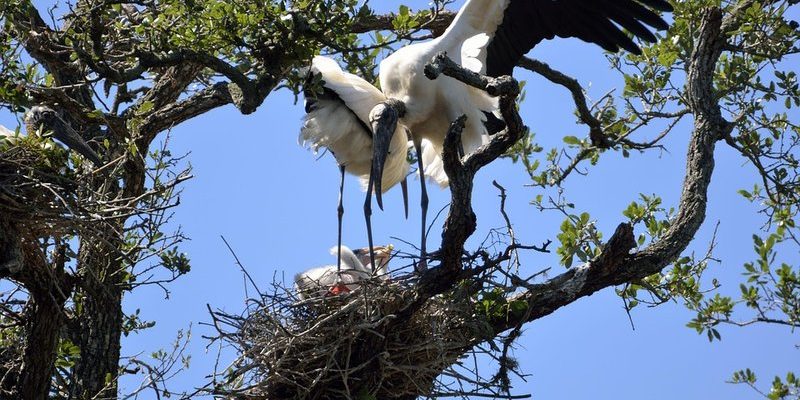
Understanding storks and their behaviors is like peeling an onion. You start with the outer layer—their striking appearance and migratory patterns—but as you delve deeper, you uncover the intricate details of their nesting rituals, parenting styles, and life stages. So, let’s explore the rich world of storks together, breaking down their lifecycle and the unique habits they maintain while nesting.
Types of Storks and Their Habitats
Storks belong to the family Ciconiidae, and while there are many species, a few significant ones stand out, like the white stork and the black stork. Each of these birds has its own preferences for habitats, which can range from wetlands and marshes to open fields and even urban areas.
The white stork is probably the most famous. They’re often seen nesting on rooftops, chimneys, and even telecommunication towers in Europe. You might think of them as urban dwellers of the avian world! On the other hand, the black stork prefers more secluded places, often nesting near rivers or lakes where they can find an abundance of fish and amphibians.
Different types of storks have adapted to their surroundings in unique ways. For instance, they use long migrations to follow food sources as seasons change. In Europe, many storks migrate to Africa during winter, traveling thousands of miles to escape the cold. Isn’t it fascinating how these birds know to take such a long journey?
Nesting Behavior: Creating Their Homes
Storks are known for their impressive nesting behavior. They usually return to the same nest year after year, adding new materials each time. Their nests are large, bulky structures made of sticks, grass, and other found materials. It’s a bit like building a home with recycled materials!
When building a nest, storks are quite resourceful. They often use whatever they can find nearby, which might include scraps of plastic, twigs, and even old rags. This is not just about aesthetics; a well-constructed nest is crucial for protecting their young from predators and the elements.
You might be wondering about the location of these nests. Storks prefer high places that are visible and hard for predators to reach. That’s why you’ll often spot them on tall trees or human structures. Once they’ve chosen a spot, they put in a lot of effort to make it cozy!
The Mating Ritual: Finding the Perfect Partner
Once a stork has established a nest, the next step in its lifecycle is finding a mate. Storks typically return to the same nesting site with the same partner each breeding season. Their courtship ritual is quite a sight! It involves elaborate displays, including clattering their beaks and performing aerial dances.
The bonding process is crucial, as the strength of their partnership affects how well they’ll raise their young. After a successful courtship, the female stork will lay eggs, usually ranging from two to six eggs per clutch. Interestingly, stork eggs are a pale blue, making them somewhat unique among birds.
During this period, both parents take turns incubating the eggs, showing a strong commitment to their future chicks. The cooperation between male and female storks is a beautiful example of teamwork, as it helps ensure the survival of their offspring.
The Incubation and Hatching Process
After the eggs are laid, the female typically incubates them for about 33 to 38 days. This is where the real waiting game begins. During this time, both parents frequently take turns to keep the eggs warm and protected.
As the hatching draws near, you might see the storks engaged in some interesting behavior. They may be observed rearranging their nest or bringing food to each other. It’s a sign of their bond and shared responsibilities. When the chicks finally hatch, it’s usually a staggered process, meaning not all of them emerge at once.
The little ones are extremely vulnerable at this stage. That’s where the parents come in, providing warmth and protection. The hatchlings are covered in soft down and are relatively helpless, relying heavily on their parents for survival in those early days.
Feeding the Young: A Parent’s Role
Once the chicks have hatched, the parenting journey really kicks into high gear. Stork parents are incredibly devoted. They spend a significant amount of time finding food and feeding their young. Their diet mainly consists of insects, fish, frogs, and small mammals, which they skillfully catch with their long, pointed beaks.
You might find it heartwarming to know that both parents contribute to feeding. After catching food, they’ll often regurgitate it to feed their chicks. This might sound a bit unappealing to us, but it’s quite common in the bird world! As the chicks grow, they become more demanding, and that means stork parents have to work even harder to keep up with their appetites.
As the chicks mature, they start to learn important skills from their parents. They observe how to forage for food and practice stretching their wings. Watching these young storks grow is like witnessing a beautiful transformation from helpless hatchlings to confident young birds ready to take on the world.
The Journey to Independence
As the season progresses, stork chicks undergo significant changes. By around 60 days of age, they are nearly fully feathered and are starting to practice flying. This phase is crucial, as it prepares them for their first migratory journey.
During this time, you might notice the parents encouraging their chicks to flap their wings and take short flights. It’s all about building strength and confidence before the big adventure ahead. They’ll also learn to hunt for food, which is a vital skill for survival.
Eventually, the young storks will leave the nest as they prepare for migration. This journey is an important rite of passage, marking the transition from dependent chicks to self-sufficient adults. It’s a bittersweet moment for parents, who’ve spent months nurturing and protecting their young.
Migration: The Final Chapter in the Lifecycle
Migration is one of the most fascinating aspects of a stork’s lifecycle. After spending the summer in their breeding grounds, these birds instinctively know when it’s time to head south for the winter. Without any GPS or maps, they navigate thousands of miles across continents, relying on a combination of environmental cues and instinct.
The migration journey can be perilous, filled with challenges like bad weather and limited food supplies. But that’s where teamwork comes into play again. Storks often fly in groups, benefiting from the collective knowledge of the group. They take advantage of thermal updrafts to conserve energy—it’s a remarkable feat of natural engineering.
Once they reach their wintering grounds—often in Africa or southern Asia—they will rest, recharge, and prepare for the next breeding season. The stork’s lifecycle is a testament to resilience and adaptability, showcasing how these magnificent birds thrive despite the challenges they face.
In conclusion, the nesting habits and lifecycle of storks are a beautiful blend of instinct, cooperation, and resilience. These birds embody the spirit of family and connection, teaching us about the importance of nurturing and protecting our young. So the next time you spot a stork, remember the incredible journey it has undertaken, from nesting to migration. It’s a story worth celebrating!

